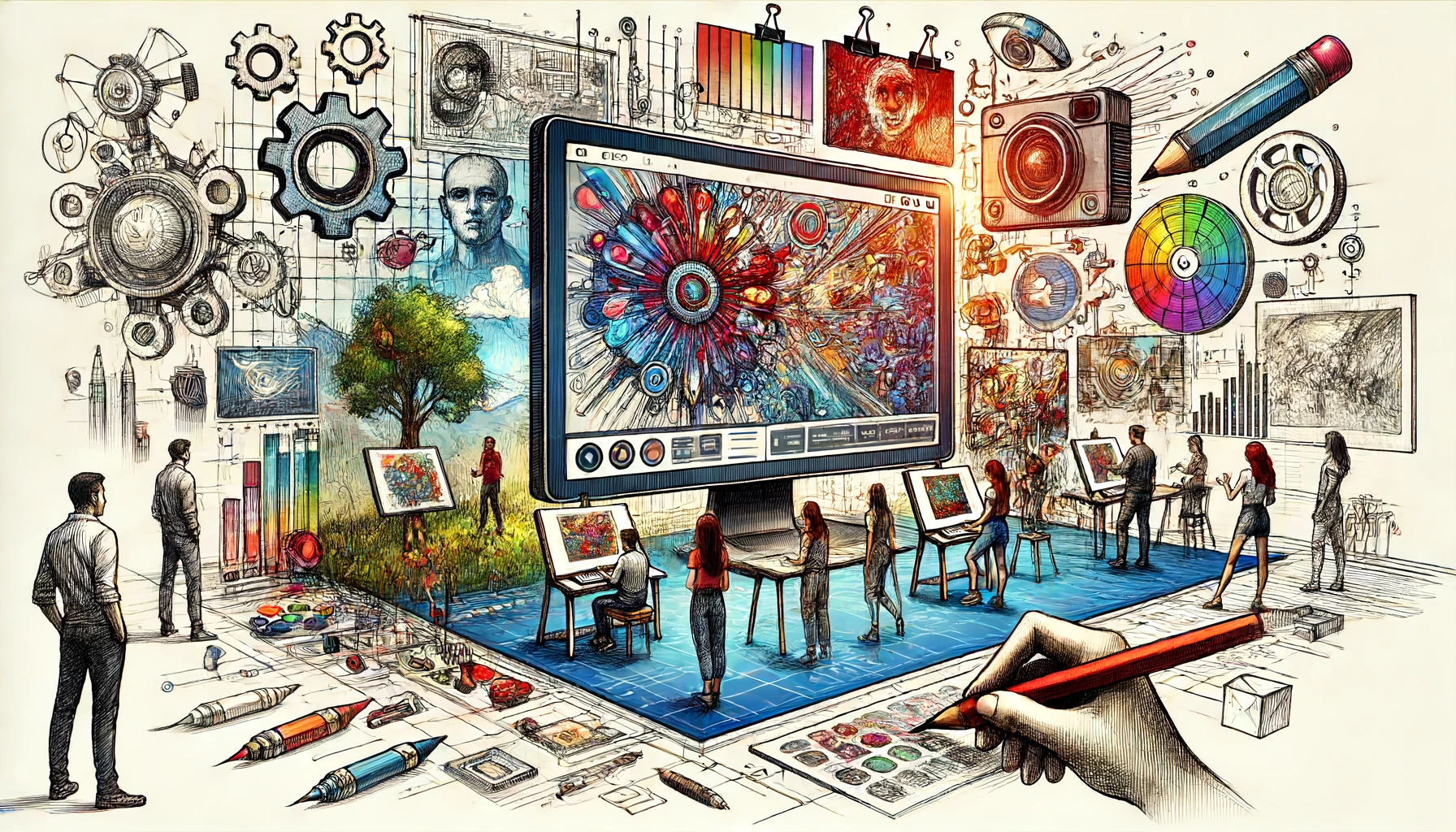
How Technology Drawing is Revolutionizing Design in 2024-In the fast-paced world of design, staying ahead of the curve is essential. In 2024, Technology Drawing has emerged as a transformative force, reshaping how designers approach their work. This article explores the various ways in which technology drawing is revolutionizing design, making it more accessible, efficient, and innovative.
The Rise of Digital Tools

Gone are the days when designers relied solely on pencils and paper. In 2024, digital tools are at the forefront of the creative process. Software like Adobe Illustrator, Procreate, and AutoCAD have become staples in the designer’s toolkit. These applications not only streamline the drawing process but also provide a plethora of features that enhance creativity.
The integration of artificial intelligence (AI) into these tools has further elevated the capabilities of technology drawing. AI algorithms can analyze design trends, suggest color palettes, and even generate initial sketches based on user input. This allows designers to focus more on their creative vision while the technology handles repetitive tasks.
Enhanced Collaboration and Communication
One of the most significant advantages of technology drawing is its ability to facilitate collaboration. In 2024, remote work has become the norm, and designers often work with teams spread across different locations. Cloud-based platforms such as Figma and Sketch allow multiple users to collaborate on a single project in real time.
This level of collaboration not only fosters creativity but also ensures that feedback is immediate and effective. Designers can share their work with clients and stakeholders instantly, making revisions easier and more efficient. This shift towards collaborative technology drawing has transformed how projects are managed, leading to faster turnaround times and higher-quality results. (Read More: How the Technology Acceptance Model is Shaping User Adoption in 2024)
3D Modeling and Virtual Reality
Technology drawing has also expanded beyond traditional 2D designs. In 2024, 3D modeling and virtual reality (VR) are becoming integral to the design process. Tools like Blender and SketchUp enable designers to create lifelike models that can be explored from multiple angles. This is particularly beneficial in industries such as architecture and product design, where visualizing the final outcome is crucial.
Moreover, VR technology allows clients to experience designs in an immersive environment. Imagine walking through a virtual version of a new building or product before it’s even constructed. This not only enhances client satisfaction but also reduces the risk of costly revisions during the development phase. The ability to visualize designs in 3D has truly revolutionized the design landscape. (Read More: The Global Technology Boom: How Innovation is Shaping the Future)
Personalization Through Technology Drawing

In today’s market, personalization is key. Consumers expect products and designs tailored to their preferences. Technology drawing enables designers to create customizable solutions easily. With tools that allow for quick alterations and variations, designers can offer clients a level of personalization that was previously unattainable.
For instance, graphic designers can create logos that can be adapted to various formats and styles based on client feedback. Similarly, fashion designers can draft patterns that can be altered for different sizes and styles with a few clicks. This flexibility not only enhances client satisfaction but also streamlines the design process.
Sustainable Design Practices
As awareness of environmental issues grows, sustainable design practices are becoming more critical. Technology drawing plays a vital role in promoting sustainability within the design industry. Software that calculates material usage, energy efficiency, and environmental impact allows designers to make informed decisions about their projects.
In 2024, many designers are leveraging technology drawing to create eco-friendly products and buildings. By utilizing digital tools to analyze the sustainability of their designs, they can minimize waste and reduce their carbon footprint. This commitment to sustainability not only benefits the planet but also appeals to increasingly eco-conscious consumers. (Read More: Technology Gadgets Trending Now: Innovations Shaping Our Future 2024)
The Future of Technology Drawing

As we look to the future, the potential of technology drawing seems limitless. Emerging technologies such as augmented reality (AR) and machine learning are set to further revolutionize the design process. Designers will have access to even more advanced tools that can predict trends, automate repetitive tasks, and enhance creativity.
In 2024 and beyond, the integration of technology into the drawing process will continue to evolve, making design more innovative and dynamic than ever before. Embracing these advancements will be crucial for designers who wish to stay competitive in a rapidly changing landscape.
Conclusion article How Technology Drawing is Revolutionizing Design in 2024
Technology drawing is undeniably reshaping the design industry in 2024. With digital tools enhancing creativity, collaboration becoming easier, and sustainable practices taking center stage, the possibilities are endless. As designers harness the power of technology, they will continue to push the boundaries of creativity, delivering exceptional results that meet the needs of a modern world. Whether you’re a seasoned designer or just starting, embracing technology drawing is essential for thriving in today’s design landscape.





